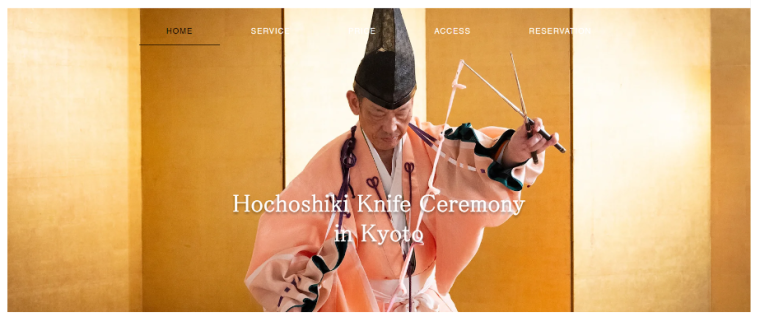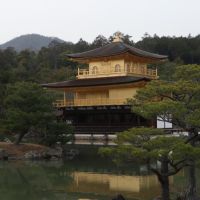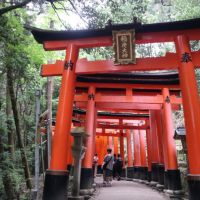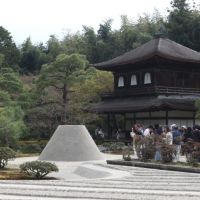Heian Shrine: A Portal to Kyoto’s Ancient Elegance and Cultural Heritage – History and Travel Guide
S-fleage
S-fleage is a Kyoto-based company. We are proud to introduce the charms of Kyoto to the world. We hope this article will help you to experience Kyoto.
Latest posts by S-fleage (see all)
Heian Shrine stands as a beacon of Kyoto’s illustrious past, a city that has been the heart of Japanese culture and history for centuries. This shrine, not just a religious site, is a portal to the ancient elegance and cultural heritage of Kyoto, offering a unique blend of history, spirituality, and natural beauty. Let’s embark on a journey to explore Heian Shrine, a must-visit destination that epitomizes the soul of Kyoto.
Contents
- Heian Shrine: That’s it! Let’s go to Kyoto!
- The History and Origins of Heian Shrine
- Exploring the Heian Shrine Complex
- How to Get to Heian Shrine
- Basic Information of Heian Shrine
- Tips and Advice for Visitors
- Attractions and Activities in the Vicinity
- Heian Shrine: A Must-Visit Destination
- The Allure of Hocho-Shiki and the Experience at Kyomiwa
Heian Shrine: That’s it! Let’s go to Kyoto!

Heian Shrine is not merely a destination; it’s an experience, a journey back in time to the Heian Period, renowned for its art, culture, and the courtly elegance of its aristocracy. Visiting this shrine is like walking through a living museum, an encounter with the splendor and traditions that define Kyoto.
The “That’s it! Let’s go to Kyoto” campaign started in the fall of 1993, ahead of the 1200th anniversary of the Heian capital relocation. The goal is to attract tourists to Kyoto, who will disembark at Kyoto Station using the Tokaido Shinkansen from the capital area and Chukyo area.
In 1995, a commercial featuring Heian Shrine was broadcast in Japan. The following is that commercial.
The official website of Heian Shrine
https://www.heianjingu.or.jp/language/english.html
The History and Origins of Heian Shrine

Now, let’s take a look at the history and origins of Heian Shrine.
Establishment Year and Founder of the Shrine
Heian Shrine was established in 1895 to commemorate the 1100th anniversary of the founding of Kyoto as Japan’s capital. It was built in honor of Emperor Kanmu and Emperor Komei, pivotal figures in Kyoto’s history. Emperor Kanmu initiated the Heian Period by moving the capital to Kyoto, while Emperor Komei was the last emperor to reside in the city before the capital moved to Tokyo.
Architectural Style and Symbolic Elements
The shrine’s architecture is a scaled-down replica of the Imperial Palace from the Heian Period, reflecting the era’s architectural elegance. Its design features a unique blend of Chinese and Japanese architectural elements, with vermilion and white colors dominating the structures, symbolizing purity and protection. The shrine’s torii gate, one of the largest in Japan, marks a symbolic entry into a sacred world, leaving the temporal behind.
Exploring the Heian Shrine Complex

Now, let’s explore Heian Shrine in more depth.
Main Buildings and Their Purposes
The Heian Shrine complex consists of several key buildings, each with its own purpose and significance. The Daigoku-den is the main hall, used for major ceremonies and housing the deities. The Otenmon Gate, resembling the original imperial palace gate, serves as the entrance to the inner sanctuary, while the Soryu-ro and Byakko-ro towers, symbolizing the Blue Dragon and White Tiger, stand guard over the shrine.
The Shrine’s Famous Gardens and Their Seasonal Beauty

The shrine’s gardens are a masterpiece of Japanese landscape design, offering a serene and contemplative environment. They are divided into four parts, each representing a different season, with carefully selected plants and flowers to reflect the changing seasons. The gardens are particularly famous for their cherry blossoms in spring and their fiery maple leaves in autumn.

How to Get to Heian Shrine
Navigating Kyoto can be quite complex and confusing. Here, we will explain in detail how to get to Heian Shrine. This guide will help you easily find your way to Heian Shrine.
Kyoto’s well-connected railway system makes it easy to reach Heian Shrine. The nearest stations to Heian Shrine are as follows.
- Take the Subway Tozai Line to “Higashiyama Station.” From there, exit from Exit 1 and it’s a 10-minute walk to the shrine.
- Alternatively, you can use the Keihan Oto Line and get off at either “Sanjo Station” or “Jingumarutamachi Station.” From either station, it’s a 15-minute walk to Heian Shrine.
These options provide convenient access to the shrine, allowing you to choose based on your starting location or preference.
By Bus: Convenient Routes and Tips
Numerous bus routes service Heian Shrine, making it accessible from various parts of Kyoto.
Here’s how you can reach Heian Shrine by bus from various stations.
-
From JR “Kyoto Station” to Heian Shrine:
- Take city bus routes 5, 100, or 110.
- Get off at “Okazaki Koen Bijutsukan, Heian Jingu-mae” and walk north for 5 minutes.
- It’s a 30-minute journey from Kyoto Station.
-
From Hankyu “Kawaramachi Station” to Heian Shrine:
- Take city bus routes 5, 46, or 32.
- Get off at “Okazaki Koen Bijutsukan, Heian Jingu-mae” or “Okazaki Koen ROHM Theatre Kyoto, Miyako Messe-mae” and walk north for 5 minutes.
- The journey takes about 20 minutes from Kawaramachi Station.
-
From the Gion and Kiyomizu-dera Temple area to Heian Shrine:
- Take city bus routes 201, 203, or 206, and get off at “Higashiyama Nijo, Okazaki Koen-guchi.” Then, walk east for 5 minutes.
- Or take city bus route 100 and get off at “Okazaki Koen Bijutsukan, Heian Jingu-mae.” Then, walk north for 5 minutes.
- The journey takes about 25 minutes from Kiyomizu-michi.
These routes provide easy access to Heian Shrine, allowing you to choose the most convenient starting point.
Taxi and Ride-Sharing: Quick and Direct Options
Taxis and ride-sharing services offer a quick and direct way to reach Heian Shrine, ideal for those who prefer not to navigate public transport or when time is of the essence.
To reach Heian Shrine by taxi from JR Kyoto Station, exit the central ticket gates and walk towards Kyoto Tower. In about two minutes, you will reach the taxi stand. The journey by taxi to Heian Shrine takes approximately 18 minutes, depending on traffic conditions. The cost for the taxi ride is around 1,900 yen.
Basic Information of Heian Shrine

Here is the basic information about Heian Shrine.
Entrance Fee
Adults pay 600 yen and children 300 yen to enter the Shin’en garden at Heian Shrine. Notably, the garden is open for free on the first day of early June and September 19th each year, offering a unique opportunity to explore its beauty without a charge.
Business Hours of Heian Shrine
Heian Shrine and its gardens are open daily, with specific hours varying by season. Typically, the shrine is accessible from early morning until late afternoon. The shrine precincts are open from 6:00 AM to 6:00 PM, these hours may vary by season. The garden’s hours are typically from 8:30 AM to 5:30 PM, also subject to seasonal changes.
Annual Events
Heian Shrine hosts various annual events, including the Jidai Matsuri, one of Kyoto’s three major festivals, which features a parade of people in historical costumes representing different eras of Kyoto’s history.
Tips and Advice for Visitors

We will also explain the recommended times and seasons to visit, as well as the facilities available.
Best Times to Visit and What to Expect
Heian Shrine is particularly recommended in spring and autumn due to its fame as a spot for both cherry blossoms and autumn leaves.
The best time to view cherry blossoms is from late March to mid-April, with about 300 cherry trees blooming within the precincts. During the cherry blossom season, special sakura-themed fortunes are sold, which can be tied to the trees, making them resemble cherry blossoms.
https://twitter.com/shizu__/status/1356014430627090437
The peak time for autumn leaves is from early to late November, when the temple buildings and grounds are enveloped in red hues.
Facilities and Services Available for Visitors
The Heian Shrine, a popular and significant tourist spot, is well-equipped with a range of facilities to ensure visitors have a comfortable and enjoyable visit. These facilities include clean and accessible restrooms, a well-stocked gift shop offering a variety of souvenirs and mementos, and traditional tea houses, where visitors can experience the cultural richness of tea ceremonies. The thoughtful provision of these amenities contributes to a complete and satisfying experience for all visitors.
Attractions and Activities in the Vicinity

Let me introduce you to the activities and attractions you can enjoy at Heian Shrine.
Local Dining and Souvenir Shopping Options
In the vicinity of Heian Shrine, visitors can indulge in Kyoto’s culinary delights, from traditional kaiseki ryori to casual street food. The area around the shrine is dotted with cafes, restaurants, and tea houses where you can savor matcha sweets, yudofu, and other local specialties. For souvenirs, the nearby shops offer a range of items, including Kyoto’s renowned crafts, textiles, and ceramics, perfect for taking a piece of Kyoto’s culture back home.
Other Nearby Tourist Spots

Heian Shrine is strategically located near other cultural and historical sites, making it a convenient starting point for exploring Kyoto. The Philosopher’s Path, a picturesque walkway lined with cherry trees, is nearby and leads to several temples and shrines. Nanzen-ji Temple, an important Zen Buddhist temple, and the Kyoto Municipal Museum of Art are also within walking distance, offering further insight into Japan’s rich history and culture.
Nearby, there are also famous Kyoto spots for autumn colors, such as Eikando, Nanzenji, Konkaikomyoji, Shinnyodo, Okazaki Canal, Murin-an, Tenjuan, and Heianden Shrine.
Heian Shrine: A Must-Visit Destination

Heian Shrine is more than just a tourist spot; it’s a profound representation of Kyoto’s history, culture, and spirituality. Its tranquil gardens, impressive architecture, and the sense of continuity with the past make it a unique and memorable destination. Whether you’re a history enthusiast, a lover of nature, or simply seeking a peaceful retreat, Heian Shrine offers something for everyone. Its enduring beauty and significance make it a place that every visitor to Kyoto should experience at least once in their lifetime.
Visiting Heian Shrine is not just about witnessing its physical beauty but also about connecting with the cultural heart of Kyoto. It’s an opportunity to reflect on the city’s past, present, and future, and to immerse oneself in the timeless elegance that defines Kyoto. So, when you’re in Kyoto, make sure to carve out time for Heian Shrine – a place where history resonates, nature soothes, and the spirit of Kyoto is palpable.
The Allure of Hocho-Shiki and the Experience at Kyomiwa

If you’re looking to deeply experience Japanese tradition and culture, the Hocho-Shiki, a culinary practice with a history of 1200 years, is something you cannot miss. This unique method of cooking dates back to the Heian period, originating from a custom where chefs serving the Imperial family had to prepare food without directly touching the ingredients, using only knives and cooking chopsticks. This tradition has been carried on by the renowned house of Mankamerou in Kyoto.
What’s even more fascinating is the opportunity to experience this Hocho-Shiki up close at “Kyomiwa,” a restaurant operated by an artisan who trained at Mankamerou. Visitors at Kyomiwa can witness the demonstration of Hocho-Shiki and then enjoy exquisite Japanese cuisine.
This unique experience is indispensable for those who wish to gain a deeper understanding of Japanese culture and experience the culinary arts. If you’re interested, please visit the link below to explore the charm of Hocho-Shiki at Kyomiwa and check the details for reservations.
https://www.hochoshiki-knifeceremony.com/




